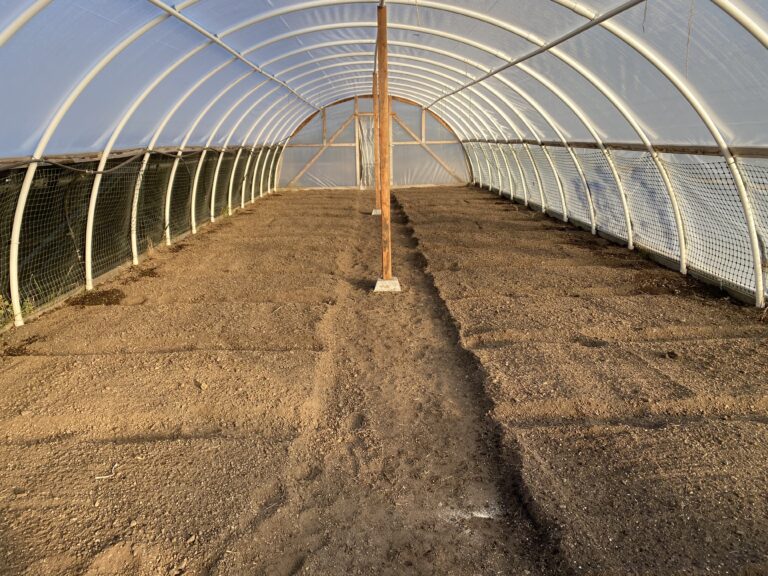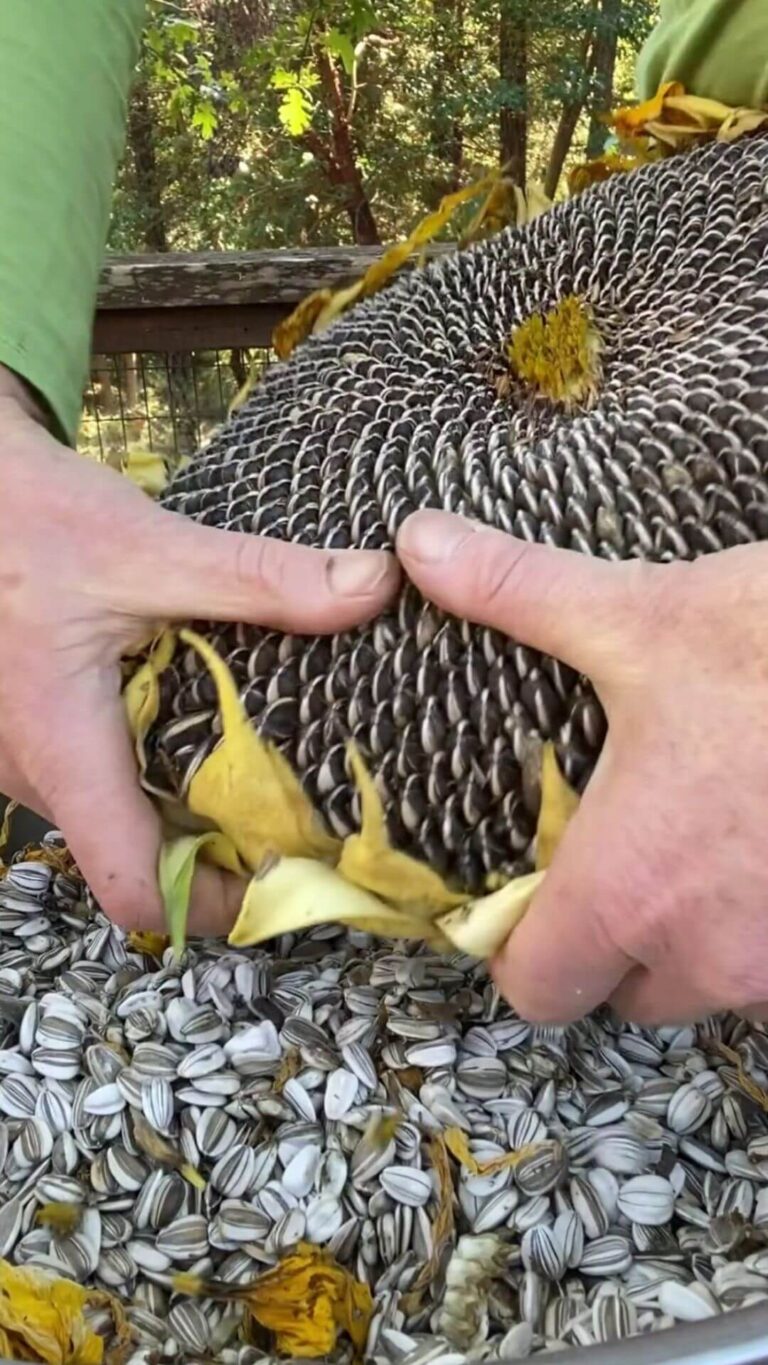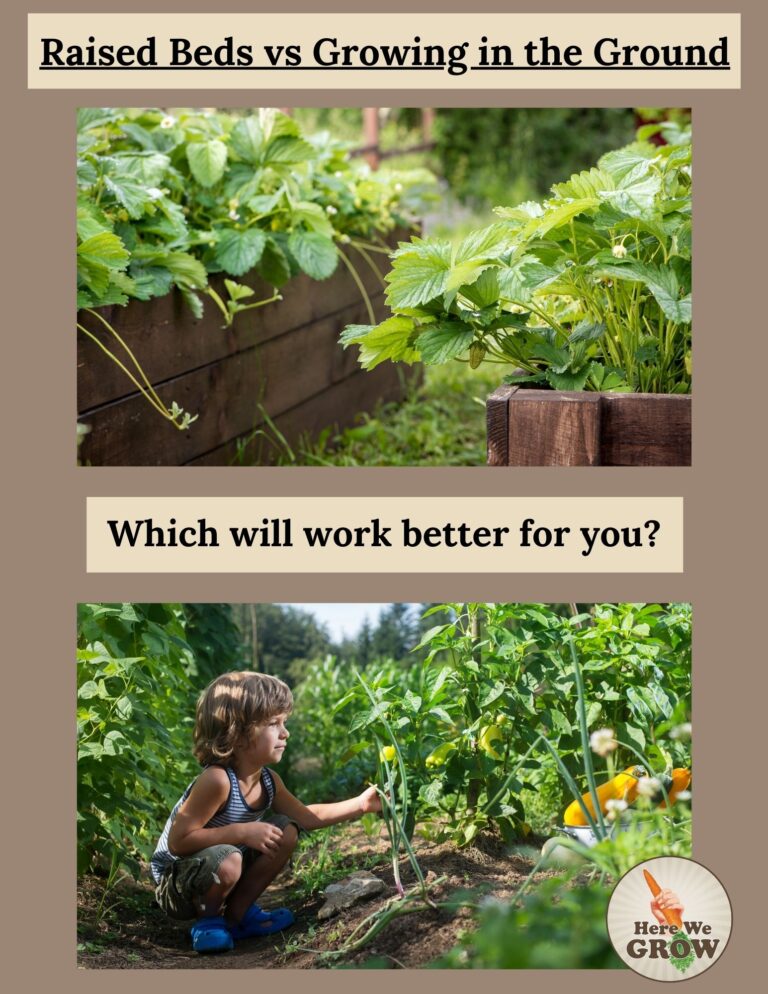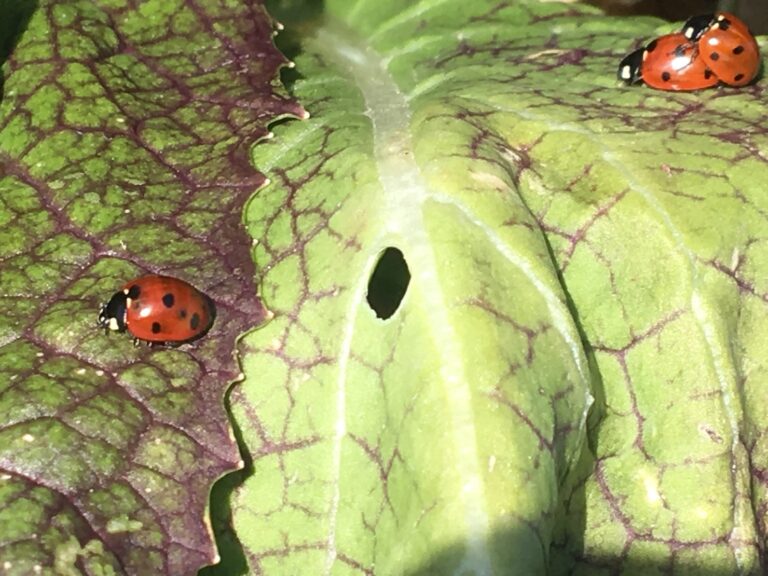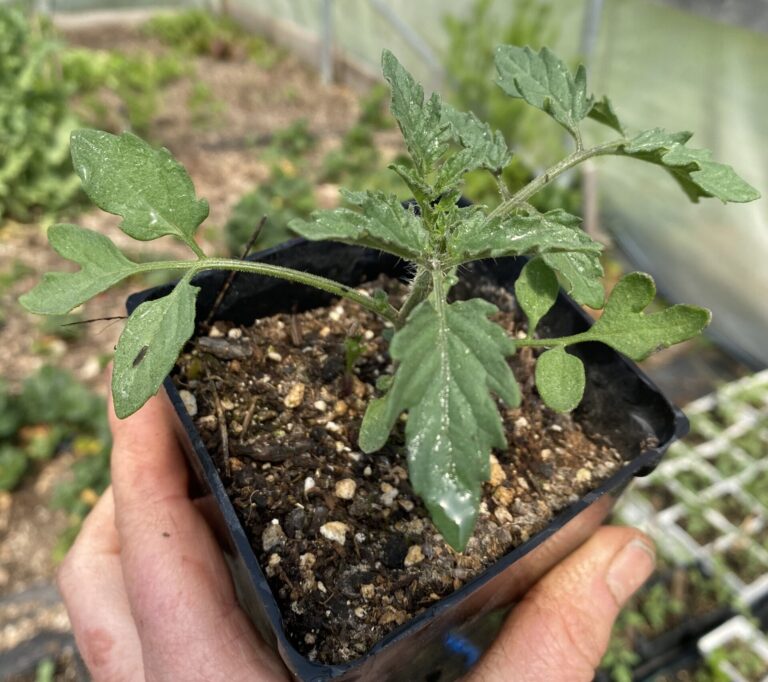Want a Permaculture Forest Garden? – Start with Planting a Guild
What is a Guild?
A fruit tree guild is a planting design based on natural eco-systems, like what you would find in the forest. A guild is a grouping of plants that grow well together and mutually benefit each other. In a natural native plant guild, each plant and animal species performs a specific function that benefits the entire ecosystem. For example, some plants may provide shade, or attract beneficial insects or provide nitrogen fixation. Similarly, animals in the guild may provide pollination, pest control, or nutrient cycling services.
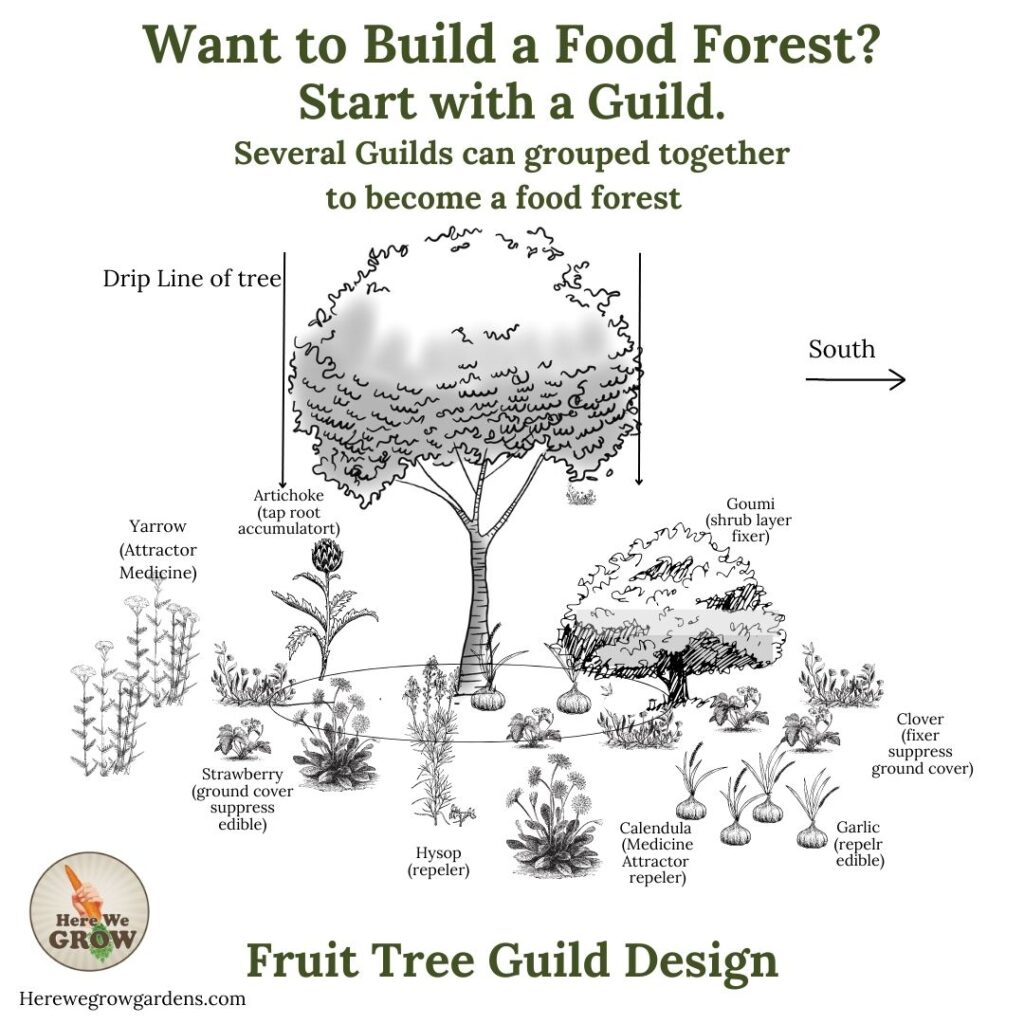
The idea behind a guild is to create a self-sustaining ecosystem where each element of the guild supports and enhances the growth and health of the others. Think of it as companion planting taken to the next level. By incorporating other plants around your tree, you are attracting beneficial insects, repelling pests and diseases, building soil, and preventing erosion, creating less maintenance providing shade and conserving water, . and recycling nutrients back into the soil,
You can have a standalone tree guild or link them together with fruit bushes and other trees to form a food forest. Start building your very own food forest beginning with a fruit tree guild.
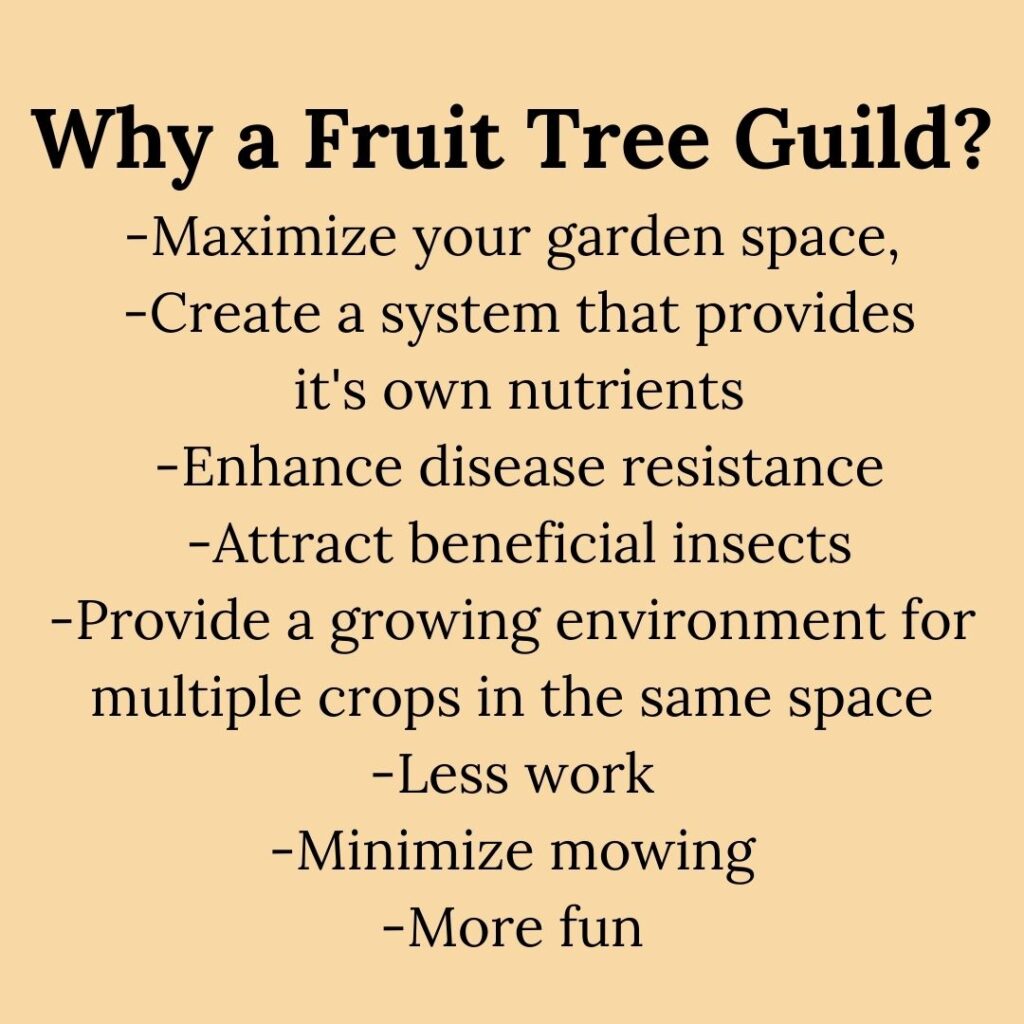
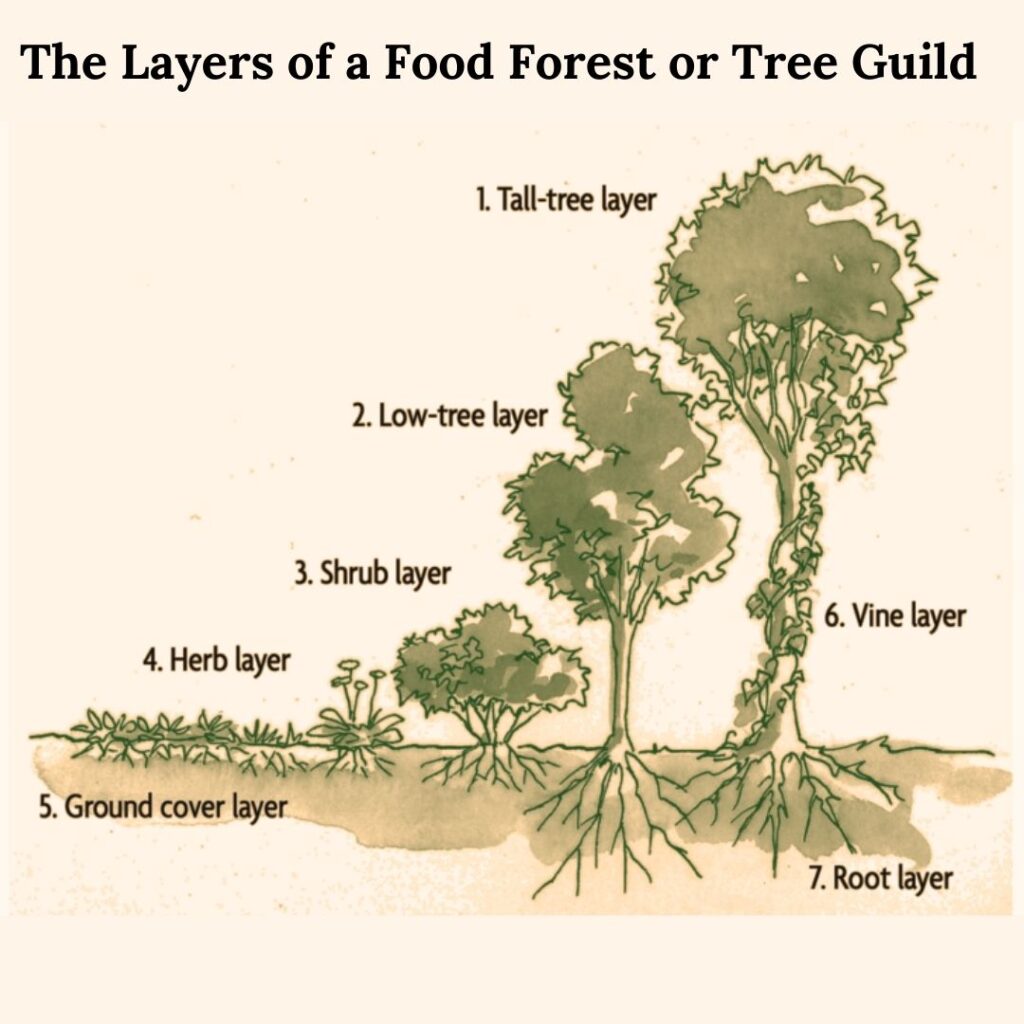
Benefits of a Guild
Fruit tree guilds imitate nature. By selecting plant species that have multiple functions, a guild can produce a diverse range of products without relying on a single crop. By incorporating nitrogen-fixing plants and soil-building fungi in the mulch, a guild can help replenish the soil with nutrients and organic matter, improving its structure and fertility over time.
When you have a system that is producing it’s health and fertility on it’s own, this ends up reducing your overall workload in the garden. Diversity attracts bacteria, fungi, insects, and birds. Incorporating edibles, medicinal plants, and flowering plants to grow alongside your tree allows those natural processes to take place.Watering is more efficient, due to weed suppression and decreased erosion. In addition, some companion plants may be able to shield your growing fruit tree from sunscald and wind.
Designing A Fruit Tree Guild
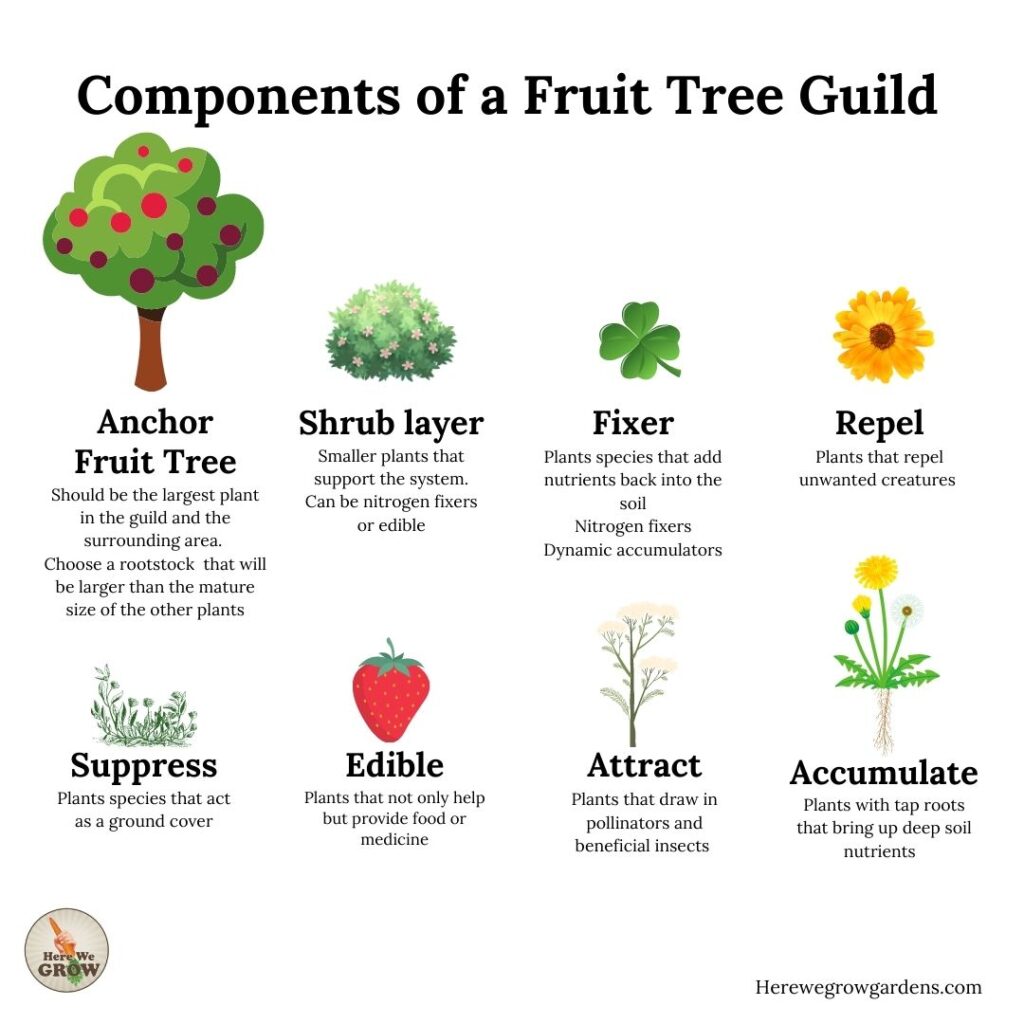
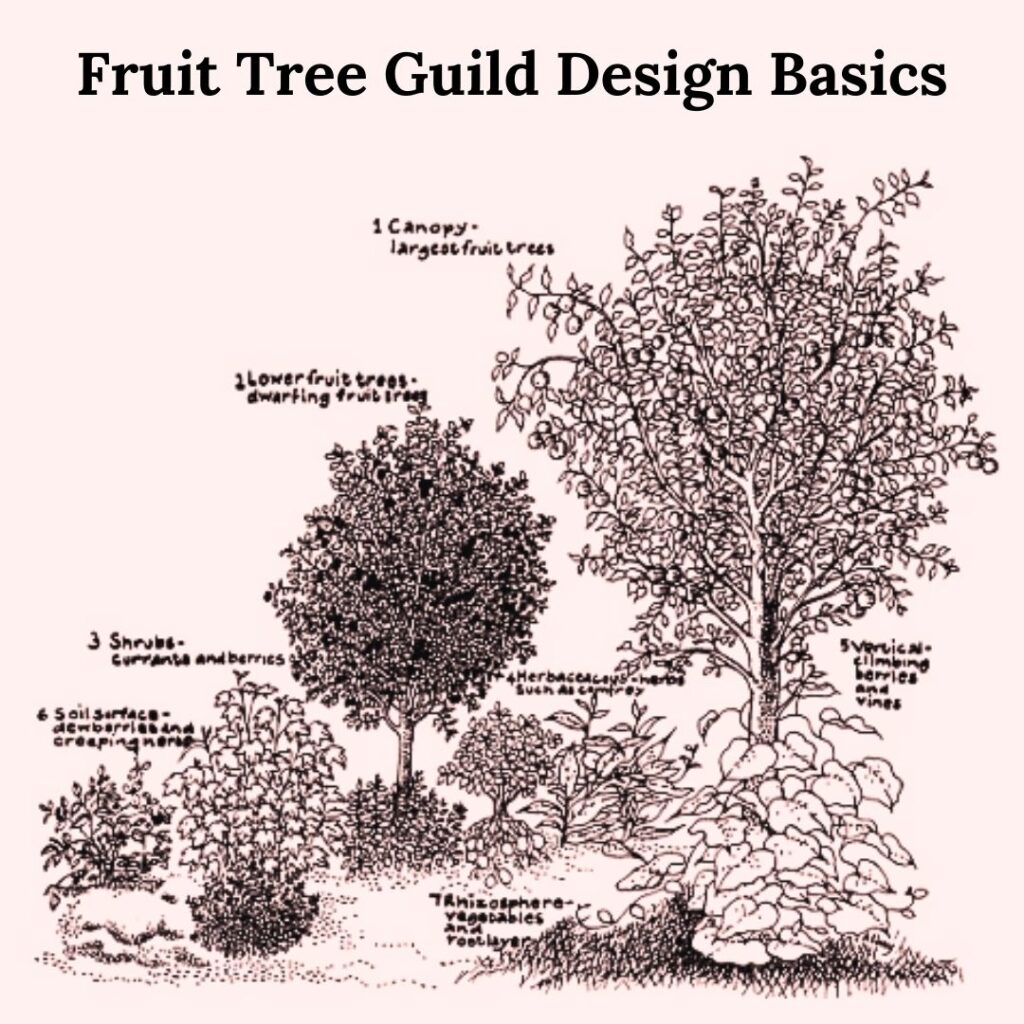
Start with a fruit tree that thrives in your zone. Find out the mature size of the tree before purchasing. You will want to consider how much space it will need and the shade it will create as it matures when selecting locations for other perennials. For smaller gardens, choose a dwarf fruit tree or a small berry bush as the central element to your guild
Prepare the area around your fruit tree, Dig out the grass and weeds to where the canopy of the mature tree’s size will reach or at least a big enough circle to have room for all of your plants. You can increase your guild size as the tree grows.
Apply compost and amendments if needed. Nutrient levels, which are necessary for plant growth – as well as soil pH, texture, and structure – vary from site to site. This might be a good time for a soil test. If you have the compost, apply a layer all around the tree up to 5″ thick, but keep the compost away from the tree trunk. It is always important to leave the base of the tree open with good air flow.
Choosing your plants: There is no single formula for the perfect tree guild.Below are some plant suggestions. Typically, a guild consists of fixers, repellents, attractors, suppressors, mulchers, and accumulator plants. There are many plant choices that will work for your guild.
Fixers: Nitrogen-fixing plants – Fixers refer to plants that are nitrogen-fixing, meaning that they add nitrogen to the soil as they grow. Planting “fixers” will be the source of fertilizer for your fruit tree. These can be silverberry, goumi, and pretty much any legume (clovers, beans, peas, lentils, peas, chickpeas, peanuts, etc.)
Attractors and Repellers: Plants that attract pollinators, beneficial insects and discourage pests. Attracting the right insects can be crucial for the overall health of your fruit trees. Attractor Plants: Edible herbs like fennel, dill, oregano, lavender, and coriander and flowers, calendula, yarrow, borage and marigold. Pest Repelling Plants: onions, garlic, perennial scallions, daffodils, marigold, oregano, chive
Suppressors: – These plants suppress the weeds and decrease watering needs with a ground cover. Suppressor Plants: white clover, red clover, squash, pumpkins, rhubarb, strawberries, nasturtiums, miners lettuce, self heal, thyme and lemon balm
Mulchers: A Mulcher plant is a perennial plant that is cut and the leaves scattered around the tree. This holds in moisture and reduces watering needs. Mulcher Plants: comfrey, hostas, ruhbarb,
To Use Comfrey or not? Comfrey is recommended often in permaculture design as a Mulcher. It is a wonderful medicinal plant that has helped me so much in times of major bruises. Comfrey is the classic chop and drop, It is a hardy perennial, easy to care for, and can be a mulcher, pollinator, accumulator and medicinal plant. However, My personal experience is that comfrey is the most invasive plant I have ever introduced to my home. Just a tiny piece of the root will grow a plant that has a tap root so deep you can never dig it out. Even the very bottom of the stem will grow if it has a piece of the root attached. I have seen it take over entire gardens and engulf huge swaths of farm rows. Just a tiny piece getting caught in the mower can spread it to another area and there is no way to remove it. I do not use comfrey in my plantings anymore. Here is a link to a video I made “Why I do not plant comfrey”
Accumulators – Accumulators rejuvenate soil by pulling up more nutrients from deep down in the soil. Accumulators: borage, comfrey, chickweed, yarrow, strawberries, sorrel, vetch, artichoke, dandelion, chicory and comfrey
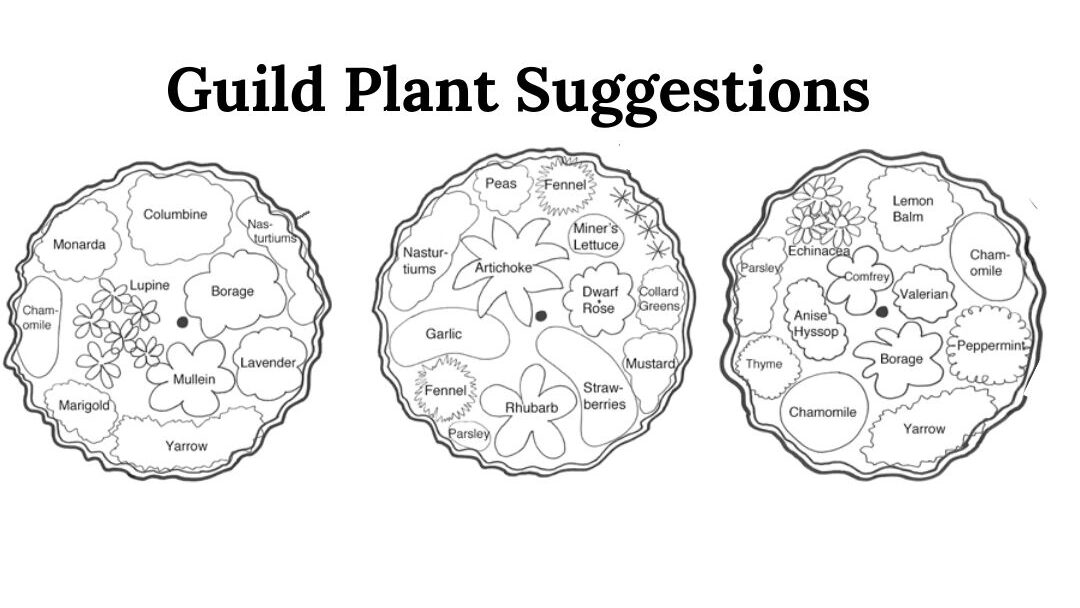
Remember your fruit tree guild will transform and evolve. As your plants mature, you will notice some plants may need to be transplanted due to increased shade or crowding. Experiment and find what works in your garden.
Remember that air flow around the base of the tree is important. Don’t let your understory plants grow against the trunk of the tree or crowd the trunk area. Always pull back your mulch to allow the base of the tree to breathe.
The trees main feeder roots go all the way out to the drip line. Remember when watering your tree that the water needs to be out at the drip line and a bit beyond. (Do not irrigate with the 2 drippers at the base of the tree method. This will stunt the growth and make the tree dependent on frequent watering) As the tree grows I extend my mulched area out to the drip line and just a bit beyond.
Mulch – Mulch brings in the magical fungal component.
Applying mulch on top of a group of plants, tucks them in. It reminds me of frosting a cake. My favorite mulch is a combination of aged leaves, grass clippings and well rotted woodchips. It is important to make sure there is plenty of nitrogen in your soil before applying woodchips or any brown woody matter. These materials will take nitrogen from the soil as the material breaks down. Be sure to pull the mulch away from the bark of the tree. It is also critical to tuck in each plant carefully and lift all the branches or leaves above the mulch to able to reach the light. If you are planting dormant plants, then just be sure that the mulch is applied lightly where the plant will emerge.
Water:
Hopefully just after you finish your planting, it rains. If it doesn’t rain, it is important to water in the tree and the plants around it. Keep the area moist and walk by every day to check on your guild. Once you see new growth emerging, the plants will be more established and require less care, but at first the plants are very tender and can not dry out at all.
Happy guilding!


